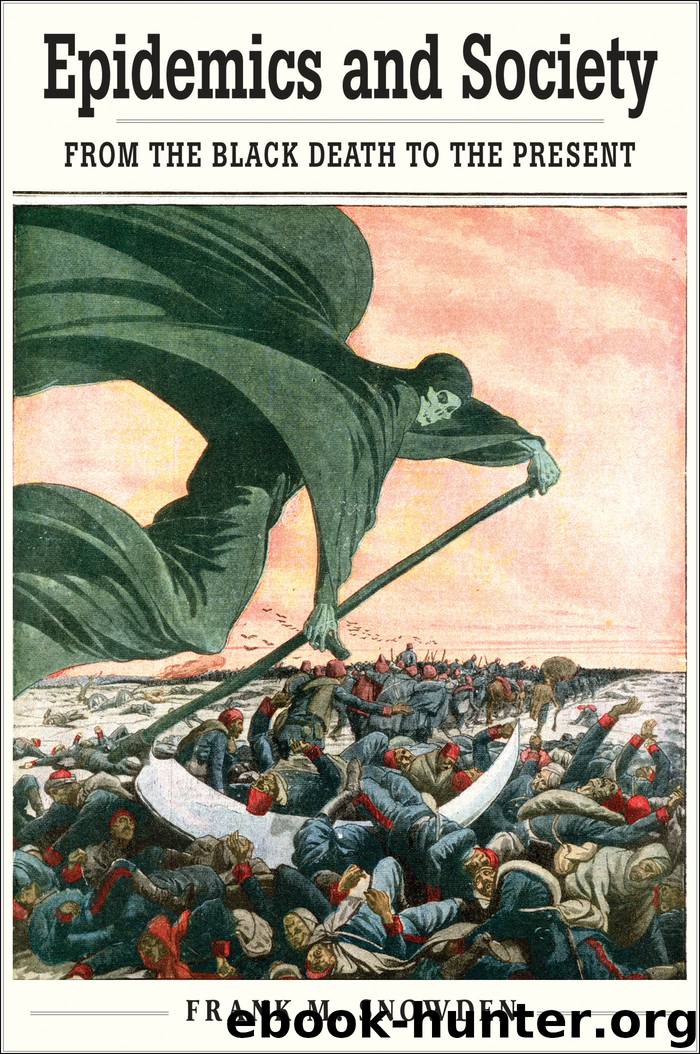Epidemics and Society by Frank M. Snowden;

Author:Frank M. Snowden;
Language: eng
Format: epub
Publisher: Yale University Press
Published: 2019-03-14T16:00:00+00:00
Figure 15.3 Jacob Riis, “Lodgers in a Crowded Bayard Street Tenement,” from How the Other Half Lives: Studies among the Tenements of New York (1890).
Another factor promoting a profoundly new social construction of tuberculosis after Koch’s scientific bombshell of 1882 was the international climate of gathering tensions among the European powers. These were years of Social Darwinism; of imperial rivalry in the “scramble for Africa”; of nationalistic economic competition; of enmity between France and newly unified Germany, marked by the French loss of Alsace and Lorraine; of the Anglo-German arms race; and of the crystallization of clashing insecurities in the form of two opposing blocs—the Triple Entente of the Russian Empire, France, and Great Britain and the Triple Alliance of Germany, Austria-Hungary, and Italy. The result was a deep awareness of national vulnerabilities and of the need for preparedness or, in the English phrase, “national efficiency.” Pulmonary disease, however, was a major liability. It lowered the birthrate, compromised productivity, undermined military power, and diverted precious resources. Consumptives, therefore, were a threat not just to themselves and their communities, but also to economic and demographic growth. They undermined empire and even threatened national survival.
The results for sufferers were severe. Fear ushered in a time of stigmatization and shunning for anyone with a diagnosis of TB or a telltale persistent cough. American newspapers and magazines reported a rising tide of what they called “phthisiphobia” and “tuberculophobia” that was stoked by the ubiquitous messages that public health authorities disseminated. Pamphlets and posters warned of the dangers presented by consumptives, and doctors and nurses reinforced the message during consultations in the clinic.
In the new understanding of tuberculosis as contagious, the general public viewed persistent coughers as dangerous and even unpatriotic. Accordingly, tuberculosis sufferers were shunned. They found it difficult to obtain lodgings, employment, or insurance, and their condition was a serious barrier to marriage. Parents of schoolchildren demanded that pupils be tested for fever as they entered school and that any child with a reading above 98.6°F be sent home.
There was also a related hysteria. People panicked about the dire consequences of licking postage stamps. In many cities residents viewed library books with suspicion as possibly bearing the lethal tuberculous bacilli from a previous reader. They demanded that all books be fumigated before they were recycled. Accordingly, the New York Public Library sent its returned books to the Board of Health, which “disinfects books by means of formaldehyde gas under pressure. The books are placed in an airtight compartment and suspended in such a way that the leaves will hang loosely and be exposed to the action of the gas.”3 For the same reason, pressured by “Clean Money Clubs,” banks sterilized coins and the Treasury Department retired old bills and issued uncontaminated replacements. According to the Research Laboratory of New York, tests determined that dirty pennies bore an average of twenty-six living bacteria each, and dirty bills seventy-three thousand.
Beards and mustaches fell out of favor after being fashionable for most of the second half of the nineteenth century.
Download
This site does not store any files on its server. We only index and link to content provided by other sites. Please contact the content providers to delete copyright contents if any and email us, we'll remove relevant links or contents immediately.
Good by S. Walden(3383)
The Social Psychology of Inequality by Unknown(2805)
The Checklist Manifesto by Atul Gawande(2686)
0041152001443424520 .pdf by Unknown(2660)
The Meaning of the Library by unknow(2423)
Guns, Germs and Steel by Diamond Jared(2217)
23:27 by H. L. Roberts(2149)
Borders by unknow(2129)
Being Mortal: Medicine and What Matters in the End by Atul Gawande(2047)
And the Band Played On by Randy Shilts(2035)
A Leg to Stand On by Oliver Sacks(1944)
The Hot Zone by Richard Preston(1921)
The Valachi Papers by Peter Maas(1773)
Get What's Yours for Medicare: Maximize Your Coverage, Minimize Your Costs by Philip Moeller(1732)
The Laws of Medicine by Siddhartha Mukherjee(1701)
The Andromeda Strain by Michael Crichton(1651)
The Obesity Epidemic by Robyn Toomath(1615)
Pharmacy Practice and The Law by Richard Abood(1504)
The Plague and I by Betty Macdonald(1461)
